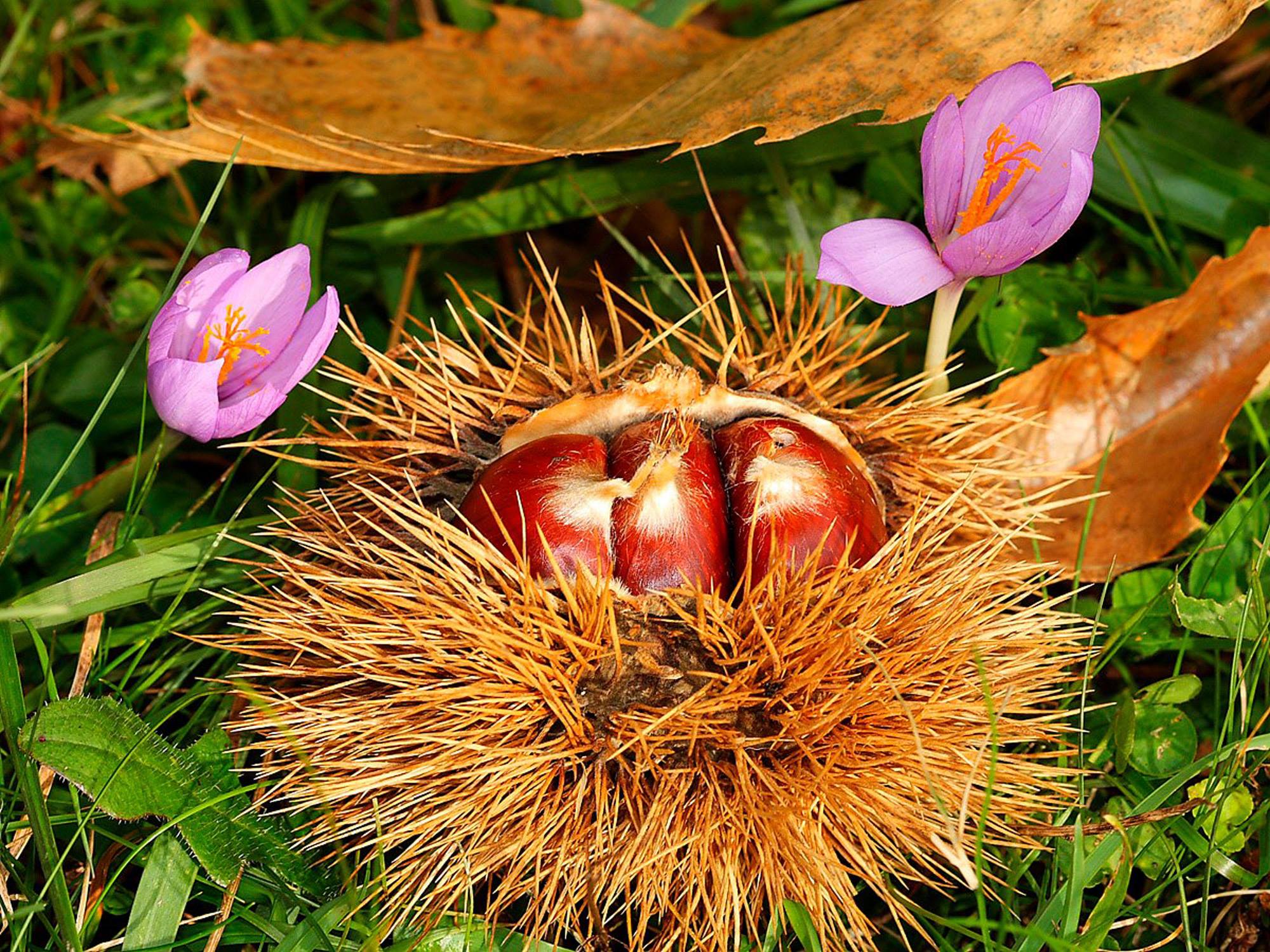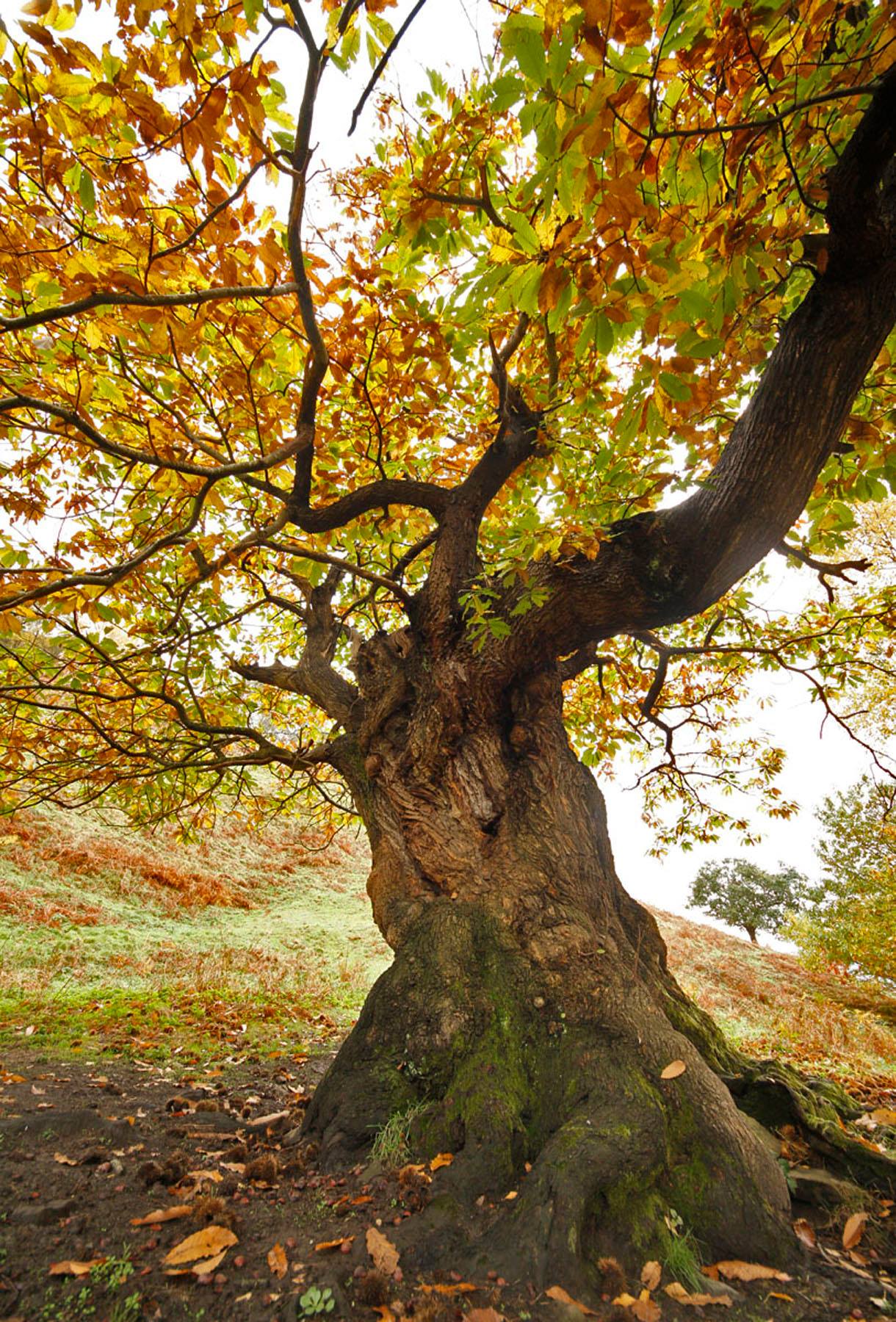Basque ethnography at a glance
On 12 October, the Feast of Our Lady of the Pillar, the council of Zigoitia in Álava used to auction off the right to harvest chestnut trees on communal land in lots of one, two or three specimens. Chestnut can also be found in the mountains of the nearby localities of Etxaguen, Murua, Manurga, Acosta, Ondategi, Gopegi and Zestafe.
Locals went up into the mountain with oxen ridden carts to harvest the crop. They beat the trees and collected the burrs (known as kikirikiños in the above-mentioned places and monsos in other areas of Álava) protected with gloves or with the help of a rake. The spiky capsules containing the seeds were placed in baskets and later dumped into the cart.
Back in the farm, the burrs were unloaded, piled up on the threshing floor against a wall and covered with hay or ferns. On the following day pieces of turf were ploughed up from a field with the hoe and brought in the cart. Starting from the bottom, the pile of chestnuts was entirely covered with the turf, the grass facing down.
If the strips of turf were properly laid, neither water nor air could penetrate and the burrs would thus keep till May. Whenever chestnuts were wanted, a couple of strips were removed and a basketful taken. The burrs were walked on and the fruits collected.
Those who had abundance of chestnuts took them to the market in Vitoria or sold them around the surrounding villages, as was the case with two families from Murua.
Chestnuts were eaten roasted or boiled. They could be roasted in the hearth, among the ashes, or in the stove. In some households there was a small drum expressly for this purpose. Either way, the outer shell was pierced to prevent the nuts from exploding. A piece of cabbage and a few anise seeds were added to the water for boiling them.
Chestnuts and milk desserts were traditional at Christmas. When wheat flour was scarce, chestnut flour was mixed in. Same as for cake, the roasted or boiled nuts were peeled, crushed or passed through the food mill and blended with the ground wheat to obtain the needed amount of flour.
Alternatively, after baking a batch of bread, the raw chestnuts were introduced in the oven and left in for several days until fully dried. Then they were ground, shell on, in the mill. Some of it was sieved for cake and bread making and the rest saved to give to the pigs together with acorn flour.
In the post-war years chestnuts were not confiscated, so much hunger was satisfied by them. Nowadays the yield of chestnuts is no longer up for auction nor put in a pile. Only a few are picked and tasted around the Feast of the Immaculate Conception and at Christmas. On the eve of the Feast of the Immaculate Conception in the villages of the valley of Valdegovía and in Labastida, chestnuts are roasted in a bonfire and eaten in the village square after the traditional night round.
The chestnut trees in Apellániz, Rituerto, Quintana and Lagrán were planted in the mid-18th century and are the property of the villagers. In Apellániz the young chestnut plants were brought from Oñati (Gipuzkoa).
Isidro Sáenz de Urturi – Etniker Álava – Etniker Euskalerria Groups
Translated by Jaione Bilbao – Language Department – Labayru Fundazioa
Reference for further information: Family Diet, part of the Ethnographic Atlas of the Basque Country collection.



